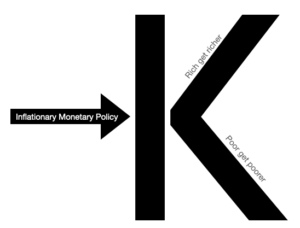Probably one of the must unknown facets of retirement planning is that you can distribute before age 59 ½ for any reason without paying the extra 10% early distribution tax. How?
Substantially Equal Periodic Payments
- Set a distribution schedule calculated using IRS tables
- The schedule must have regular payments of a certain consistent amount.
- You must make receive these distributions from your retirement account either until you reach age 59 ½ or for a 5 year period… whichever is longer.
Internal Revenue Code Section 72(t) is where the extra 10% tax for “early distributions” (before age 59 ½) is imposed. However, if you read on to IRC 72(t)(2)(A)(iv) it is explained that the 10% tax is not applicable to any distribution that is part of a series of Substantially Equal Periodic Payments – or SEPP for short.
To give you an idea of how this works using calculations from IRS life expectancy tables, let’s examine a fictional case study with round numbers for simplicity:
Jared is considering early retirement at age 45, and over the years he has grown his IRA to an asset value of $2,000,000. He isn’t sure whether he wants to completely retire, work part time, pursue a career change, or start a new business. Let’s take a look at his options…
Jared’s Maximum Penalty Free Distributions
If Jared subjects his entire $2 million to a SEPP distribution plan, he would receive $8,001.66 per month or $96,020 per year.
There are three methods of calculation (amortization, annuitization, minimum distribution). This maximum is a result of opting for the amortization method.
Jared’s Minimum Penalty Free Distributions
A SEPP plan can involve one retirement account or any combination of multiple retirement accounts. Because of this, there is no actual minimum amount of SEPP distributions. Jared can allocate his retirement funds among one or many retirement accounts and then choose which one(s) he wants to include in the SEPP distribution plan. Theoretically, Jared could put only $100 into an IRA and then begin a SEPP distribution plan for that IRA only.
The general rule is that these SEPP distributions must continue in the same amount & frequency until the longer of 5 years or reaching age 59 ½… but there are ways to create flexibility.
Starting high, then reducing the distributions later
If Jared starts out with the maximum (by subjecting all of his $2 million of funds to the amortization method – resulting in about $8k per month) and later wants to reduce his distributions, he is allowed to make a one time change to the minimum distribution method. This would change his distributions to $4,295.50 per month (or $51,546 per year). This one time change does not compromise the exemption from the extra 10% tax. It’s important to note that you cannot make a one time change in the other direction (to either amortization or annuitiziation method).
Starting low, then increasing the payments later
The maximum is the maximum, but if you think that you may want to start out with less than the max distributions while leaving the opportunity to increase to the maximum later, there are options. If Jared wants only $2,000 per month from his SEPP, he can opt to put about $500,000 into its own IRA and subject only that account to the SEPP (using the amortization method). A couple years later he wants to increase to the maximum, so he begins a new/separate SEPP distribution schedule for an additional $1 million of his retirement funds. This second SEPP schedule creates $4,000.83 in monthly distributions in addition to the $2,000 per month he gets from his first SEPP.
A few years later, he decides he wants to reduce his payments, so he changes his 2nd SEPP distribution schedules to the minimum distribution method reducing it from $4,000.83 per month to $2,147.75 per month, while the 1st SEPP schedule remains at $2,000 per month.
Where to Start?
Once you’ve established how much you want to receive from your SEPP schedule, it is advisable to prepare documentation of its commencement and calculations. This documentation should encourage any custodian or administrator (involved in the distributions) to complete your 1099-R in a way that reports your SEPP distributions as exempt from the extra 10% tax. If they report it as normal early distributions (subject to the extra 10% tax), you can still fill out IRS form 5329 to claim the exemption.
If your SEPP schedule is not setup properly, the extra 10% early distribution tax may be retroactively applied to all early distributions. My company will prepare the needed SEPP documentation for a reasonable fee.
Your numbers
Generally, the higher you account asset value, the higher your potential maximum SEPP distributions. Also, the higher your age, the higher your potential maximum SEPP distributions. Contact me to find out what your maximum SEPP schedule would be and your options on planning for flexibility.


